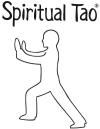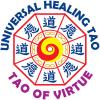Tao Yin Qigong
About Tao Yin
Tao Yin is a set of floor exercises in the Chinese qigong tradition.
These exercises incorporate stretching, flowing movements, breathwork,
Chinese five-element theory, healing sounds, and focused intention. They form a
foundation for much of qigong.
Tao Yin--or perhaps more appropriately spelled "Dao Yiin"--literally means
"the way of intention-directing". Through focus and full-body awareness, intentioned
energy is directed throughout the body and often to a particular area being stretched.
The purpose of these exercises is to become more embodied (i.e. body-conscious),
as well as maintain flexibility and youthfulness. It is often said that a young tree bends
and sways in the wind, while a rigid old tree breaks.
Like the five elements themselves, Tao Yin has five separate--but equally important--aspects:
1. Full Body Breathing
Here we learn to surrender to the earth, to the force of gravity. We allow our breathing
to become slow, relaxed, and deep. Through conscious and effortless breathing, we allow
our breath and its associated energy to permeate various different areas of the body.
With focused intention, this breathing process will allow many patterns of tension to dissolve.
As we move area-by-area, we feel more relaxation and space inside. We feel our
consciousness shift more from the head to a relaxed full-body awareness. Soon, we
discover that our whole body is breathing and we feel a sense of calm in our new
embodied state.
2. Strengthening the Psoas
One of the most important aspects of the Tao Yin work is in strengthening the psoas muscle.
This is a muscle that exists in the lower back and extends down the back of the legs.
The psoas muscle is often called the "seat of the soul" as it surrounds the kidney area.
This area houses the "Door of Life" which--according to Chinese medicine--is where our
vitality comes from. Unfortunately, due to stresses in life and poor living habits, the psoas
muscle is usually tight and compressed. When the psoas muscle is tight and compressed,
it inhibits our vitality from flowing into our body, and this causes chronic fatigue; it shortens
our lifeforce. One of the main focuses of Tao Yin is strengthen, expand, and relax the
psoas muscle. Rather than address the psoas muscle indirectly via other means, here in
Tao Yin we address this issue head-on and put it at the forefront of importance. Not only
is strengthening and expanding the psoas muscle important in its own right, but it has
immediate benefits in many other disciplines, e.g. in Iron Shirt 1, pain/discomfort
that occurs in standing meditation is often caused by having a weak and tight psoas muscle.
3. Strengthening the Spine
Also in the back is the spine. The spine is our energetic highway throughout the body.
In western medicine we know that the spine houses the spinal cord, which contains nerves
and spinal fluid; these provide communication throughout the body. However, the spine
also helps distribute qi (lifeforce energy) through the body. One of the most important ways
to have a healthy body is to have a healthy spine. So in Tao Yin, we work with this directly,
to help release patterns of tension and tightness around the spine. We will learn to develop
more sensitive awareness of our spine and learn to distinguish the individual vertebrae from
the spine as a whole. Through this work, much rigidity is released which allows us to have
a more vibrant body.
4. Strengthening the Tendons
Surrounding and stabilizing the spine are many ligaments and tendons. Thus, to expand
upon the spine work, we address the tendon system. Tendons, when springy and elastic,
contribute to our youthfulness. They allow our body to be more flexible. The adage
mentioned before about a young tree swaying in the wind is an apt description. So in this
aspect of Tao Yin we focus on flowing floor exercises that strengthen the tendon system.
This work also serves as complementary material or preparatory material to the tendon
qigong of Iron Shirt 2.
5. Lotus Meditation
To round out our five aspects of Tao Yin, we have the Lotus Meditation.
The Lotus Meditation is a heart-centered meditation that has two components: one, it is
a means to balance out the heat in our body (especially the common heat imbalance
between the heart and kidney system), and two, it also opens the loving compassionate
qualities of the heart.
These loving qualities of unconditional acceptance spread throughout the body and then
permeate out into the world. Thus the Lotus Meditation forms a natural pairing with the
Inner Smile meditation.
Lineage
| Descendant | Taught By | During |
|---|---|---|
 |
 |
2007-2010 |
 |
 |
1999 |
 |
 |
1995 |

